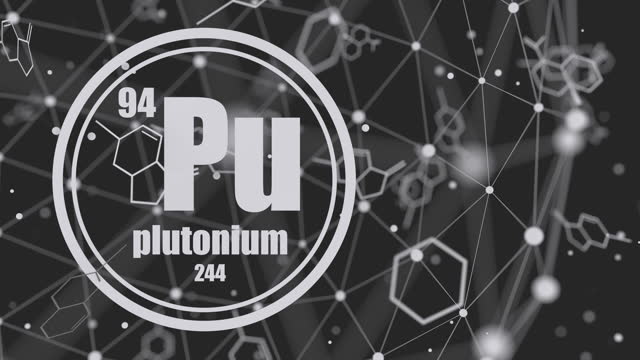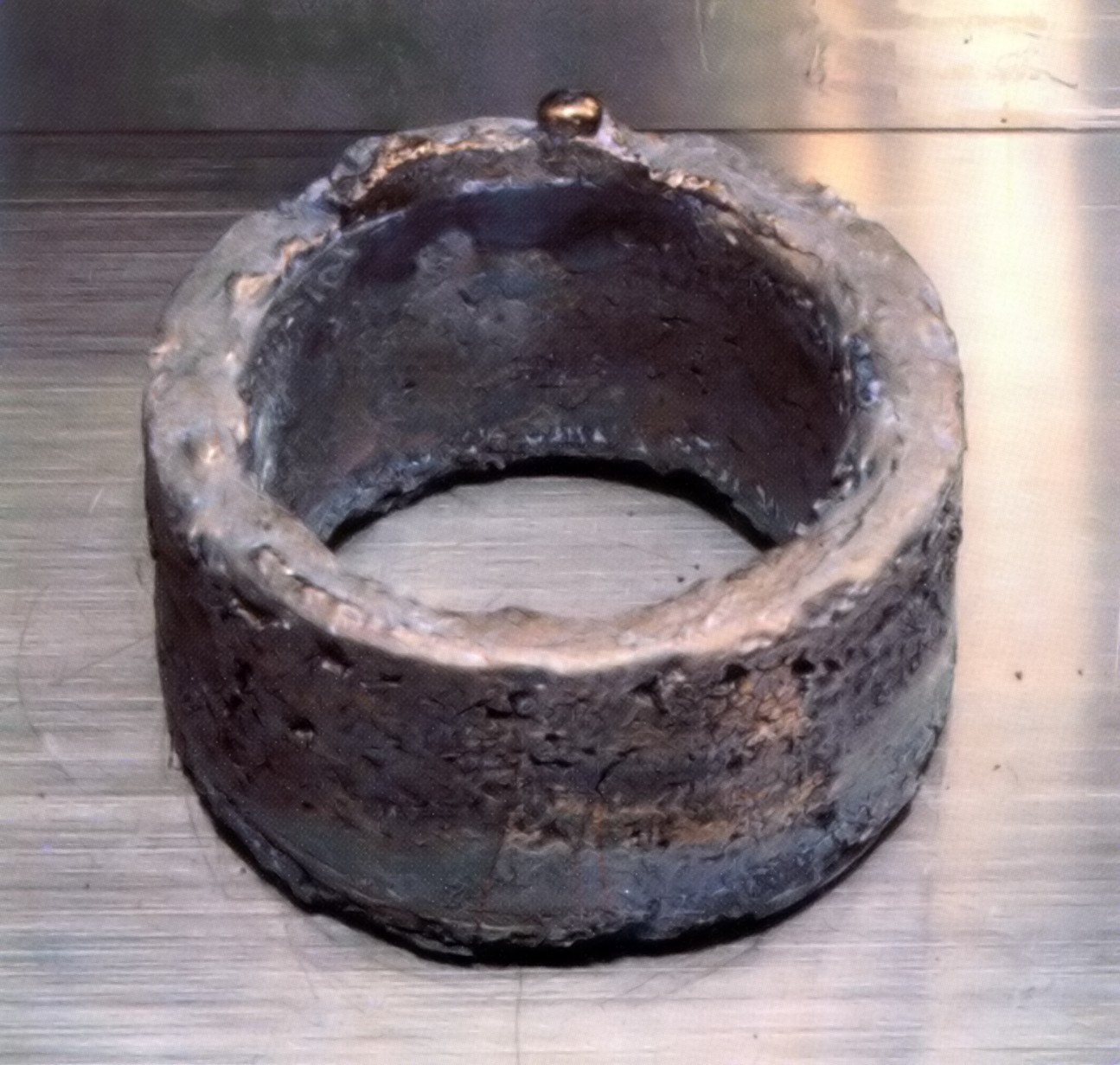Identity.
While plutonium's most infamous use is in nuclear weapons, its story doesn't end there. Plutonium-238, a different isotope, shines in powering deep-space missions like Voyager 1 thanks to its steady heat generation from radioactive decay. In smaller doses, it even powered early heart pacemakers before safer alternatives emerged. Despite its potential, plutonium's radioactivity demands extreme caution and strict regulations, making its applications limited but impactful.
Atomic Structure:
The nucleus consists of 94 protons (red) and 150 neutrons (orange). 94 electrons (white) successively occupy available electron shells (rings). Plutonium is an actinide and transuranic element in period 7, and the f-block of the periodic table. Actinides are soft radioactive metals.
History.
In 1940, amidst the anxieties of war, Glenn Seaborg and his team at Berkeley birthed plutonium in a cyclotron. Initially named after the then-planet Pluto, it was quickly recognized as crucial for the Manhattan Project, fueling the atomic bombs dropped on Hiroshima and Nagasaki.
The Cold War propelled plutonium onto the center stage of the nuclear arms race. Both the USA and USSR amassed stockpiles, creating a chilling threat of mutually assured destruction. While nuclear power plants emerged, fueled by plutonium's energy, the specter of proliferation loomed large.
Today, plutonium's presence is still controversial. Concerns about accidents, terrorism, and radioactive waste remain. However, its unique properties fuel deep-space probes and offer potential for future nuclear reactors with enhanced safety. Research continues to explore safer production methods and responsible disposal solutions. Plutonium's future remains uncertain, demanding balanced decision-making and international cooperation.
Usage.
Plutonium's story is a balancing act. In nuclear power plants, it's a potent energy source, but waste disposal raises concerns. In deep space, it powers probes like Voyager 1, exploring the cosmos, while its military use in atomic bombs remains a chilling reminder of its destructive potential. Though its applications are limited due to its radioactivity, plutonium's unique properties continue to push boundaries in both peaceful and controversial ways.
-
Nuclear Energy: Plutonium-239 is a primary fissile fuel used in nuclear power plants. It releases tremendous energy through controlled nuclear fission, generating electricity for millions worldwide. However, concerns about safety and radioactive waste remain.
-
Space Exploration: Plutonium-238 shines brightly in powering spacecraft venturing far beyond Earth's reach. Its long-lasting heat, generated by radioactive decay, provides reliable energy for probes like Voyager 1, exploring interstellar space for decades.
-
Medical Application: While largely replaced by safer alternatives, plutonium-238 once powered early cardiac pacemakers. Its small size and consistent heat output offered a life-saving solution for patients requiring heart rhythm regulation.
-
Military Application: The most infamous use of plutonium is in nuclear weapons. Plutonium-239's ability to undergo rapid fission in an uncontrolled chain reaction releases devastating energy, forming the core of atomic bombs dropped during World War II and fueling Cold War anxieties. However, international treaties and disarmament efforts strive to minimize this destructive aspect.
Some of the benefits of using Plutonium are:
Plutonium is a powerful source of energy. One gram of plutonium can produce as much energy as 3,500 tons of coal. This makes it a very attractive fuel source for nuclear power plants, especially in countries with limited fossil fuel resources.
-
Plutonium can be used to make long-lasting batteries. Plutonium-238, a different isotope of plutonium, is used in radioisotope thermoelectric generators (RTGs) to power spacecraft and other remote devices. These batteries can last for decades without needing to be recharged, making them ideal for use in extreme environments.
-
Plutonium can be used in medical treatments. Plutonium-239 is used in some targeted alpha therapy treatments for cancer. In this type of therapy, radioactive particles are delivered directly to cancer cells, where they can destroy them without harming healthy tissue.
-
Plutonium can be used to make safer nuclear weapons. Some experts believe that plutonium-based nuclear weapons could be more stable and less likely to accidentally detonate than traditional uranium-based weapons. However, this is a controversial topic and there is no consensus on the matter.
Sources.
Plutonium's sources are both natural and man-made. In tiny traces, it arises from natural uranium deposits through spontaneous neutron capture. However, the vast majority comes from human activities. Nuclear power plants create it as a by-product when uranium-238 absorbs neutrons, primarily plutonium-239. Additionally, past nuclear weapons testing and accidents have released plutonium into the environment, albeit in much smaller quantities. While its natural presence is negligible, human actions have significantly shaped the plutonium landscape, highlighting the need for responsible handling and disposal.
Properties.
Multiple Personaltiles : Unlike most elements, plutonium exists in six distinct crystal structures, each with unique physical properties. For example, alpha-plutonium is brittle and hard, while delta-plutonium is soft and malleable. This characteristic makes it incredibly versatile but also necessitates careful handling depending on the specific phase present.
Self-Heating: Due to its radioactive decay, plutonium constantly generates heat. This property makes it ideal for powering deep-space probes like Voyager 1, where sunlight is unavailable. However, it also presents a safety concern when handling larger quantities, requiring special cooling systems to prevent overheating.
Radionactive and Toxic: As a transuranic element, plutonium emits harmful alpha and gamma radiation. Exposure can cause serious health problems, including cancer. Additionally, it's chemically toxic and can be absorbed into the body through ingestion or inhalation, further amplifying the potential dangers.

